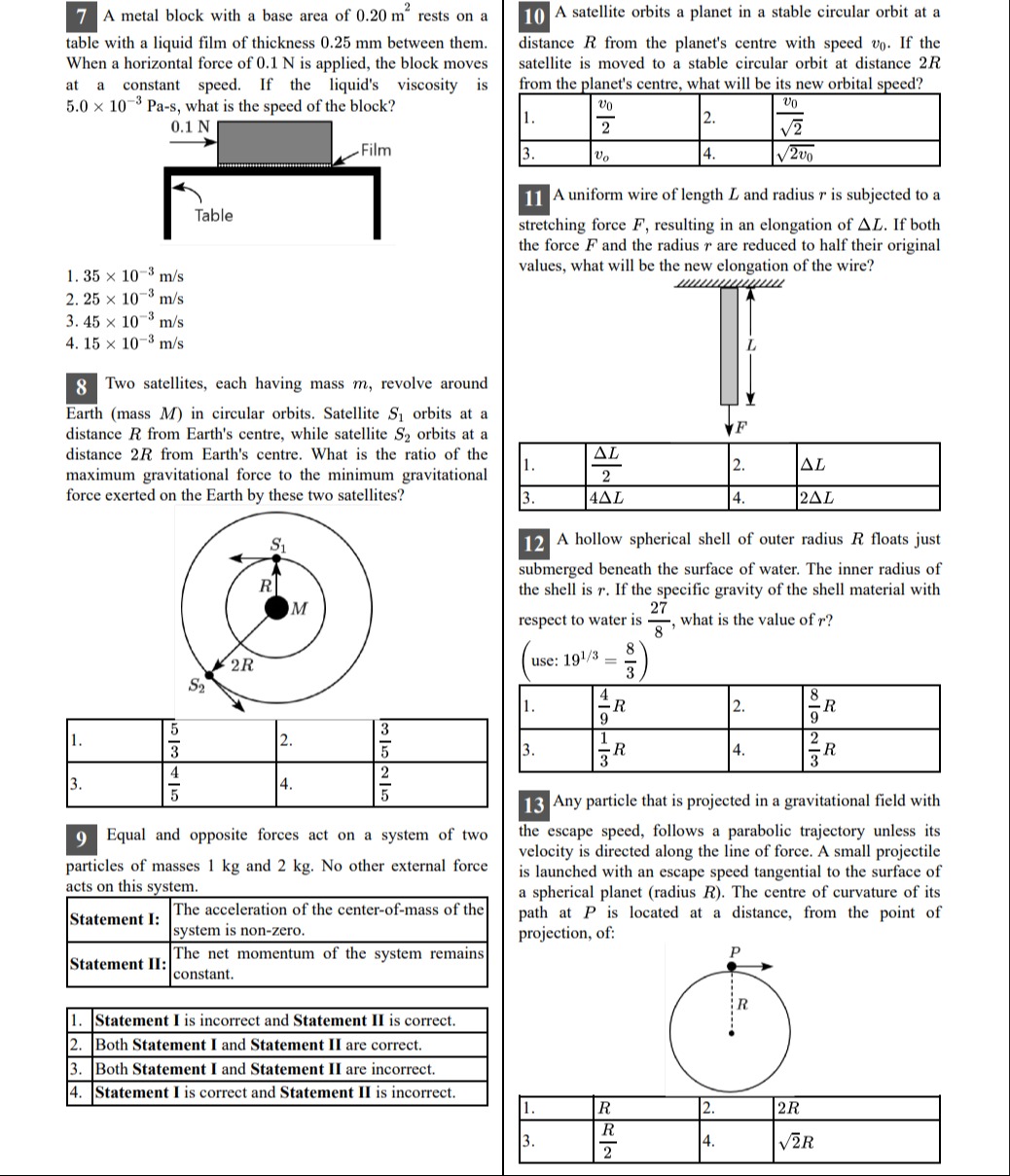Question
Question: A metal block with a base area of $0.20 \ m^2$ rests on a table with a liquid film of thickness 0.25...
A metal block with a base area of 0.20 m2 rests on a table with a liquid film of thickness 0.25 mm between them. When a horizontal force of 0.1 N is applied, the block moves at a constant speed. If the liquid's viscosity is 5.0×10−3 Pa-s, what is the speed of the block?

35×10−3 m/s
25×10−3 m/s
45×10−3 m/s
15×10−3 m/s
25 \times 10^{-3} m/s
Solution
The viscous force F is given by F=ηAdydv, where η is the viscosity, A is the area, and dydv is the velocity gradient. For a thin liquid film, dydv≈hv, where v is the block's speed and h is the film thickness. Since the block moves at a constant speed, the applied force equals the viscous force: F=ηAhv. Rearranging for v: v=ηAFh. Substituting the given values: v=(5.0×10−3 Pa−s)(0.20 m2)(0.1 N)(0.25×10−3 m)=1.0×10−30.025×10−3 m/s=0.025 m/s=25×10−3 m/s.
